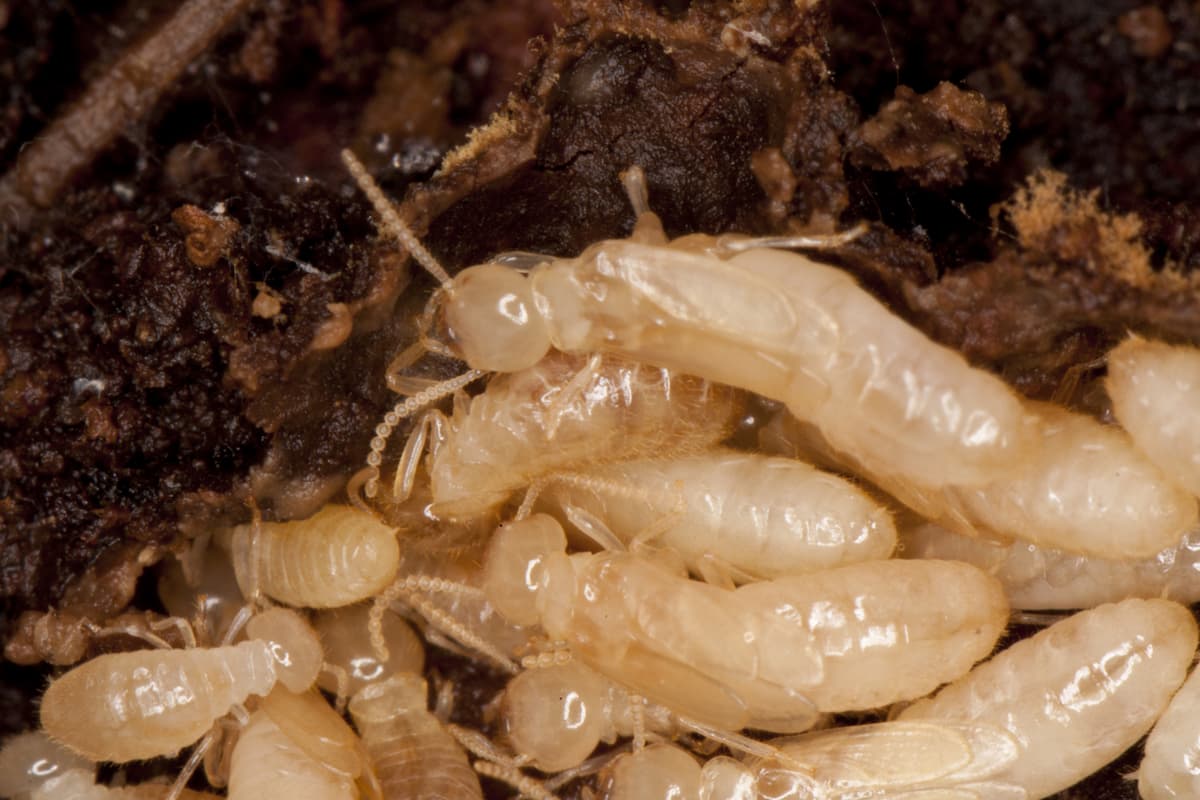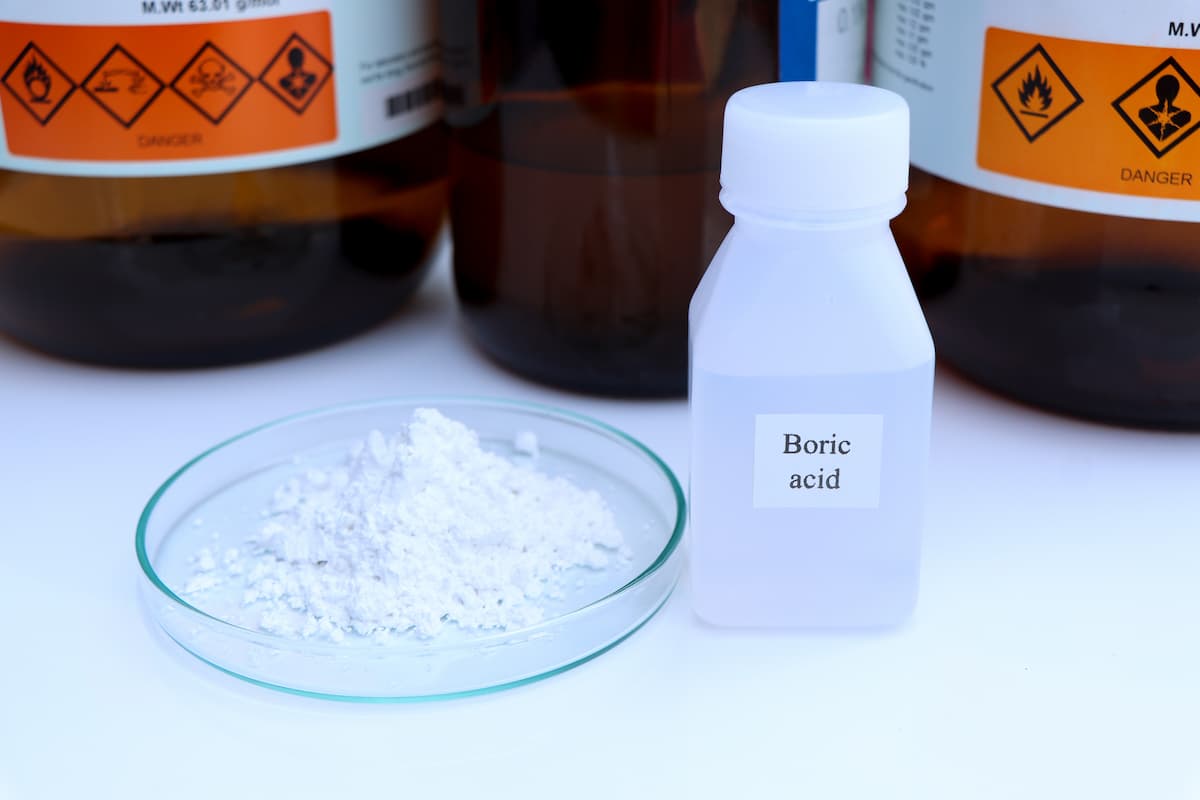What Kills Termites Instantly?
An extensive termite infestation is hard to eliminate, but it’s not impossible.
The most effective methods require patience – a lot of it – but it’ll pay off as your house is protected for months, sometimes years.
Unless you spray insecticide directly on a termite, most control methods don’t kill the insects on the spot. Even Bifen XTS, the fastest commercial solution, takes 24 hours to eliminate termites, and most products take weeks to eradicate an entire colony.
Since effectiveness is more important than speed, knowing the species of termite is important as the proper treatment enhances the process.
What Kills Subterranean Termites?

The best control methods when hosting subterranean termites revolve around their feeding habits and habitat.
A defining characteristic is that they build their nests in the soil, making their way to your wood from beneath.
If you see mud tubes in your wood, subterranean termites are the likely cause, and your control method should eliminate these pathways.
1. Termiticides
Termiticides are liquid chemicals that work by building a barrier around your home and are undetectable to termites.
Exterminators apply them to your house’s exterior perimeter, killing subterranean termites at the source.
Those that digest contaminated substances die from nervous system complications. Those that get the chemicals on their bodies also die, spreading the poison around the colony.
The time to subdue an entire colony depends on the product, but most take at least three weeks.
Still, termiticides are among the most effective solutions to infestations, keeping you termite-free for several months.
Taurus SC is the most popular termiticide, and though it takes about 90 days to eliminate an infestation, it keeps you protected for up to 10 years.
Bifen XTS is arguably the fastest-acting termiticide. It takes 24 hours to kill affected termites.
Though effective, Bifen XTS keeps you protected for only about 90 days compared to Taurus SC. You’ll have to rely on preventative maintenance afterward.
2. Direct Chemicals
Most termiticides are unsafe for indoor use. Direct chemicals are the opposite.
Termidor Foam is an excellent example.
Shoot the substance in crevices and spaces you suspect host colonies. The foam will expand up to 30 times its size before turning into liquid and coating the entire nest.
Termidor Foam and similar chemicals are lifesavers if dealing with subterranean termites, as their homes are deep inside the ground or walls. Because the foam expands, you can reach these spaces without much hassle and eliminate existing colonies.
However, direct chemicals are not as effective as termiticides.
If using an indoor chemical, pair it with exterior treatments to maximize results.
3. Baits
Like termiticides, baits protect your house’s perimeter. They have poisons that trick termites into digesting them.
Baits work by killing termites as they try to shed their exoskeleton. They take weeks to work because they involve the insect’s biological development.
Affected termites also spread the poison to the rest of the colony, killing the entire population in due time.
They’re one of the most effective methods as they protect you for a year or more.
4. Beneficial Nematodes
Beneficial nematodes are a more natural solution to termite infestations. They’re microscopic worms many people use to control garden pests.
Using beneficial nematodes is a cost-effective, environment-friendly way to manage a termite infestation.
For the best results:
- Apply nematodes in the spring. The temperatures are high, and termite larvae thrive in warm conditions.
- Use the nematodes immediately. If you can’t, store them in the refrigerator.
- Apply them to moist soil. Beneficial nematodes travel through water.
- Apply them in the morning or evening when it isn’t scorching hot. UV rays from the sun are enough to harm or kill them.
Although efficient, beneficial nematodes take up to two weeks to kill termites and other pests.
What Kills Drywood Termites?
Targeting the soil to eradicate the root cause is nearly useless with drywood termites. They mainly make their nests in wood, causing more damage than subterranean termites.
Drywood termites are also resilient enough to make homes in any place with sufficient water, including in plumbing systems and roof materials.
The best way to kill drywood termites is with fumigation. The chemical spreads to the entire house and kills them wherever they are.
Other methods include spot treatments and essential oils.
1. Spot Treatments
Spot treatments involve injecting wood with termiticide.
Direct ingestion leads to death. The critters also spread the poison throughout the colony as they feed and groom each other.
For effective treatment, exterminators drill holes into infested wood every 10 inches. They stop drilling when they receive pushback, signifying the nest.
They then inject termiticide into the wood and seal the holes, letting the poison get to work.
If the situation isn’t too severe, the colony will die off in 24 to 48 hours, but an extensive infestation takes longer.
Spot treatments are not as effective as fumigation as the poison might miss a few colony members. Wood treatments work best post-fumigation as an ongoing prevention method.
2. Orange and Neem Oils
Orange and neem oils are similar to baits in that they prevent termites from molting.
Mix the oil with water and spray it on affected surfaces several times daily.
Wear gloves when using orange oil, as it can cause skin irritation.
Orange and neem oils are not as reliable as fumigation or spot treatments if dealing with an extensive infestation. They’re also more hands-on as you must inspect your home and reapply the oils often.
DIY Solutions for Subterranean and Drywood Termites

Though it’s best to use targeted solutions for specific termite types, some control methods work across the board.
These include boric acid, cardboard traps, and diatomaceous earth.
These methods work best as temporary solutions and when dealing with a small colony. Call an exterminator if the infestation is extensive.
1. Boric Acid
Boric acid is an active ingredient in pesticides. It’s reliable and readily available.
The powder works by seeping into the exoskeleton, dehydrating the insect, and damaging its nervous system.
The process is quicker if the insect ingests it, messing up the digestive and nervous systems.
Evenly spray the substance on affected surfaces for the best results.
2. Diatomaceous Earth
Diatomaceous earth is a naturally-occurring powder derived from fossilized algae.
It’s similar to boric acid in that it seeps into a termite’s exoskeleton and dehydrates it.
Evenly spray it on affected areas and re-apply every at least once a week for the best results.
3. Cardboard Trap
To set up a cardboard trap, wet two pieces of cardboard and pile them on each other.
Place the trap next to the termite nest and wait for results.
The cellulose from the cardboard attracts the insects, while the moisture makes it easier for them to chew through it.
Once a host of termites infests the cardboard trap, dispose of it and set up another one.
Conclusion
Instantly eradicating a termite infestation is easier said than done.
The most effective solutions take advantage of a termite’s biological processes, so naturally, they take a long time to work.
The period depends on the method, but regardless of what you use, don’t make the mistake of thinking you’ll be termite-free in a day.
If using DIY solutions like boric acid and diatomaceous earth, you should also not use more than instructed. It’s counterproductive, and you can end up with more termites.
Whatever extermination method you choose, give it time to work its magic. For best results, follow up with preventative maintenance and regular inspections to keep your home termite-free for longer.
